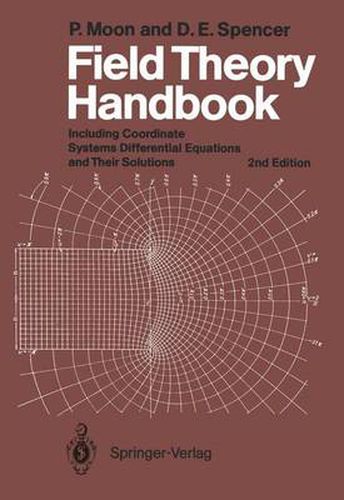Readings Newsletter
Become a Readings Member to make your shopping experience even easier.
Sign in or sign up for free!
You’re not far away from qualifying for FREE standard shipping within Australia
You’ve qualified for FREE standard shipping within Australia
The cart is loading…






This title is printed to order. This book may have been self-published. If so, we cannot guarantee the quality of the content. In the main most books will have gone through the editing process however some may not. We therefore suggest that you be aware of this before ordering this book. If in doubt check either the author or publisher’s details as we are unable to accept any returns unless they are faulty. Please contact us if you have any questions.
Let us first state exactly what this book is and what it is not. It is a compendium of equations for the physicist and the engineer working with electrostatics, magne tostatics, electric currents, electromagnetic fields, heat flow, gravitation, diffusion, optics, or acoustics. It tabulates the properties of 40 coordinate systems, states the Laplace and Helmholtz equations in each coordinate system, and gives the separation equations and their solutions. But it is not a textbook and it does not cover relativistic and quantum phenomena. The history of classical physics may be regarded as an interplay between two ideas, the concept of action-at-a-distance and the concept of a field. Newton’s equation of universal gravitation, for instance, implies action-at-a-distance. The same form of equation was employed by COULOMB to express the force between charged particles. AMPERE and GAUSS extended this idea to the phenomenological action between currents. In 1867, LUDVIG LORENZ formulated electrodynamics as retarded action-at-a-distance. At almost the same time, MAXWELL presented the alternative formulation in terms of fields. In most cases, the field approach has shown itself to be the more powerful.
$9.00 standard shipping within Australia
FREE standard shipping within Australia for orders over $100.00
Express & International shipping calculated at checkout
This title is printed to order. This book may have been self-published. If so, we cannot guarantee the quality of the content. In the main most books will have gone through the editing process however some may not. We therefore suggest that you be aware of this before ordering this book. If in doubt check either the author or publisher’s details as we are unable to accept any returns unless they are faulty. Please contact us if you have any questions.
Let us first state exactly what this book is and what it is not. It is a compendium of equations for the physicist and the engineer working with electrostatics, magne tostatics, electric currents, electromagnetic fields, heat flow, gravitation, diffusion, optics, or acoustics. It tabulates the properties of 40 coordinate systems, states the Laplace and Helmholtz equations in each coordinate system, and gives the separation equations and their solutions. But it is not a textbook and it does not cover relativistic and quantum phenomena. The history of classical physics may be regarded as an interplay between two ideas, the concept of action-at-a-distance and the concept of a field. Newton’s equation of universal gravitation, for instance, implies action-at-a-distance. The same form of equation was employed by COULOMB to express the force between charged particles. AMPERE and GAUSS extended this idea to the phenomenological action between currents. In 1867, LUDVIG LORENZ formulated electrodynamics as retarded action-at-a-distance. At almost the same time, MAXWELL presented the alternative formulation in terms of fields. In most cases, the field approach has shown itself to be the more powerful.